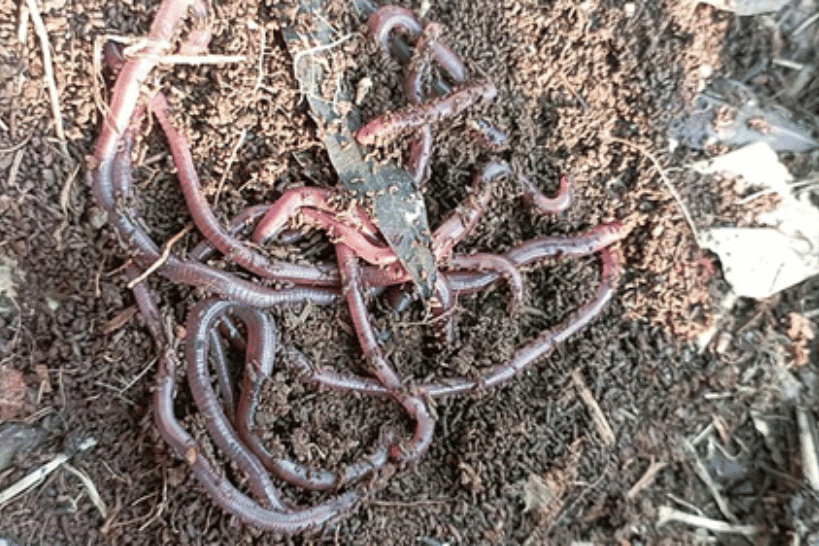Greening Up in Your Kitchen – The Next Generation
We’ve heard it again and again: we all need to do our part to reduce our environmental footprint. A lot of what we can do can happen right in our kitchen! Composting, recycling, reducing food waste, reducing food packaging by buying in bulk… we hear all sorts of great advice from all over the place to help make our kitchen habits more sustainable, not to mention all the new tricks we can learn thanks to new knowledge and new technologies. Let’s explore some of these new tools and tricks!
Making Good Food Choices

Not all food choices have the same environmental footprint. This is one of the many things you can learn about at the Science Centre’s all new Our Climate Quest exhibition. The amount of space and water needed to produce different foods can vary, just like the amount of carbon dioxide their production generates. So, how can we make good choices when time comes to plan our meals and fill up our plates?
As a general rule, animal-based foods (like meat and cheese) have a bigger environmental footprint than plant-based foods. For example, one serving of beef involves 159 m2 of space and 490 litres of water and emits 7.17 kg of carbon dioxide into the atmosphere. Now let’s compare this to tofu, that needs just under 3 m2 of space and 57 litres of water and emits less than 1 kg of carbon dioxide (0.14 kg to be exact). Consuming less meat is a good move, environmentally speaking, and it helps keep a lid on your own carbon footprint too.
Even among plant-based foods, some require a lot more resources to produce than others. For instance, corn needs a lot of farmland space. To grow just a single portion, you need a parcel of land equal to 0.62 m2. Another example is almonds, which need an enormous amount of water to grow. A single almond grown in California is said to need about 12 litres of water!
Choosing plant-based foods that need less space and less water to grow is ones of the best choices you can make. Try tomatoes, potatoes, and apples… and mushrooms are also a great choice. Another way to reduce the carbon footprint of your food choices is to buy local. Locally sourced food doesn’t have to travel as far to get to your plate and we know what that means… fewer CO2 emissions!
Sprouts and Microgreens

Looking to spruce up your menu with something fresh? They’re environmentally friendly and come at a bargain: sprouts and microgreens! Both of these little plant-based marvels are harvested when they are still very young, but sprouts and microgreens aren’t exactly the same. Microgreens are grown from seeds planted in soil. Sprouts don’t need soil at all! Sprouts are grown from seeds that are initially soaked in water for five to twelve hours (depending on the seed) and then left to grow from two to five days with nothing more than a daily rinse. Sprouts are harvested more immediately than microgreens which are left to grow a bit longer.
Requiring very little space and costing very little, both of these foods offer you a great way to add a splash of green to your meals without the heavy carbon footprint. To grow sprouts, you’ll need seeds, water, and a container to grow them in —a Mason jar is ideal. To grow microgreens, you’ll need a container filled with soil. The only real effort you need to make is finding the seeds, preferably organic ones. You can buy seeds online, in gardening supply stores, and often in bulk food stores.
Want to give it a try? Concordia University has a useful guide on growing sprouts https://www.concordia.ca/cunews/offices/vprgs/gradproskills/blogs/2017/02/14/grow-your-own-superfood.html and Montréal’s own Lufa Farms had a useful guide on growing microgreens https://montreal.lufa.com/en/blog/articles/microgreens-guide-20220413123728.
Entomophagy

When it comes to improving our environmental footprint and our health, we often hear about consuming less meat —less red meat more specifically. How can we go about replacing this source of protein? Believe it or not, you can replace that red meat protein with another source of protein, and a surprising one at that: insects! That’s right, entomophagy is all about eating insects.
These little creatures aren’t only rich in protein, but they are also a source of healthy omega-3s and omega-6 unsaturated fats, vitamins, and fibre as well as minerals like iron and calcium. Nutrition aside, raising insects for consumption pollutes a lot less than raising conventional livestock. All things being equal, raising conventional livestock requires about 2,000 times more water than raising insects. What’s more, insects emit relatively lower volumes of greenhouse gas over their lifespan and need a lot less space to live. Compare this to livestock production which uses a whopping 70% of the world’s agricultural lands.
Here at home, there’s only one major obstacle to get around and that is that people don’t tend to think of insects as food (many find them a bit gross). Once you get around that, integrating insect protein into your life is pretty easy! A number of grocery stores carry insect-based ingredients and there is no shortage of recipe ideas online.
Want to try some? There are lots of recipes available online, like Army Worm Banana Bread https://canadiangeographic.ca/articles/eat-more-insects-with-these-recipes/ or try some premade products from Canadian companies https://www.cbc.ca/life/food/everything-you-need-to-know-about-adding-insects-to-your-diet-1.5451991.
Vermicomposting… Indoor Edition!

Composting is a great way to reduce and reuse organic waste from our kitchens. It is typically done outdoors in the backyard or in a community garden. For those of us without access to these outdoor spaces, well, welcome to the world of indoor vermicomposting!
First, let’s quickly revisit the basics of composting: organic waste is consumed by detritivores (mainly insects, worms, and microorganisms) and is transformed into humified, nutrient-rich, organic soil. How can we make this happen in our kitchen? Vermicomposting involves worms and yes, you can raise worms at home. They just need enough food and a damp, low-light environment that’s kept at a stable temperature.
You’ll need a container, soil, table scraps… and worms! Make sure your container has holes so that it can let air circulate. This helps ensure you don’t grow any mould. Line the bottom of the container with soil to give your worms a home base. Add your plant-based table scraps —you need avoid animal-based food waste here— and then cover them with dampened, shredded newspaper. Once that’s done, simply drop the lid on your container and tuck it away in a cool, dark room.
This cool, dark, and humid environment should be everything your worms need to do their work and generate for you, in a few months’ time, a rich mix of compost that your indoor plants (and anyone with a green thumb) will adore.
Removing Glass from Your Recycling Bin

Recycling is an essential part of doing our part to reduce and manage waste, but did you know that putting glass in your recycling bin can sometimes be counterproductive? Glass bottles and containers often shatter after they are tossed in the recycling truck. These shards of glass quickly get mixed in with other recycled materials, but these shards of glass can also get contaminated by other materials that shouldn’t have found their way in the recycling truck in the first place. In both cases, this reduces the recyclability of materials, which leads them to simply being trashed once they get to the recycling centre.
So, does this mean that we should put all glass containers in the garbage instead? No, quite the opposite! Aside from buying fewer glass containers of course, you can help avoid this problem by pulling glass items from your recycling big and bringing them directly to an eco-centre or for a refund in the case of refundable bottles. If you’re in Montréal, you can also drop them in some of the new glass recycling bins made available as part of a pilot project! You’ll find one in the SAQ parking lot along Rue du Marché-Central and another in the Place Fleury parking lot, corner of Fleury Est and Garnier.
We should mention that not all recycling centres have trouble recycling glass. Your best bet? Ask and find out which is the best strategy in your community.
Looking for concrete actions to become true protectors of the environment? Don't miss our featured exhibition Our Climate Quest, until April 9, 2023!
